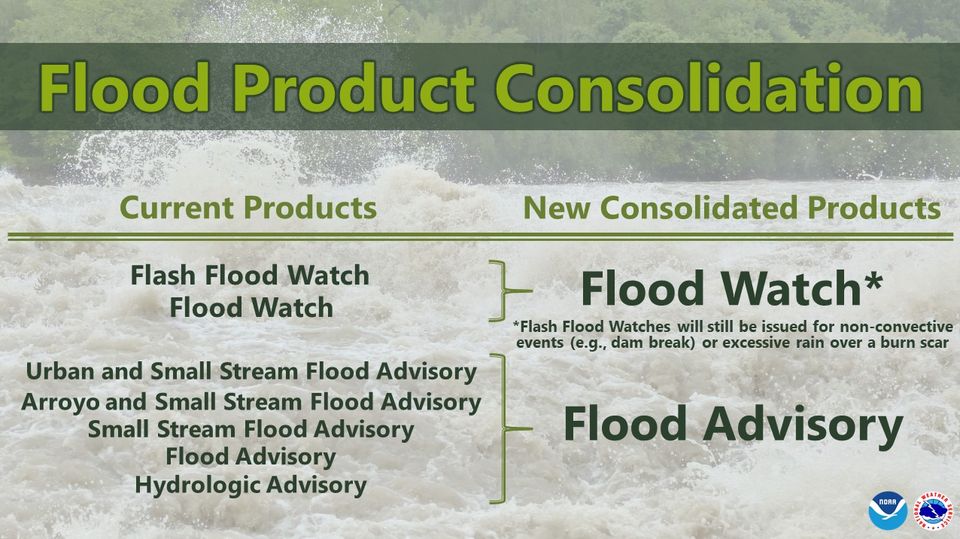
The National Weather Service (NWS) has simplified the language used on notifications related to flooding.
Effective on or after November 4, 2021, the NWS will begin to implement the consolidation and/or reformatting of Flood Watches, Warnings, and Advisories. The changes are as follows:
– First, Flash Flood Watches and Flood Watches will be consolidated into one Flood Watch product when the immediate cause is excessive rainfall. Flash Flood Watches will be maintained for these specific situations only:
– Threat of flash flooding due to non-convective causes (e.g., dam or levee failure, ice jam)
– Threat of flash flooding and debris flows caused by excessive rainfall on burn scars or in debris flow- and landslide-prone areas.
– Second, the five types of individual headlines associated with Flood Advisory products, including Urban and Small Stream Flood Advisories, Arroyo and Small Stream Flood Advisories, Small Stream Flood Advisories, Flood Advisories, and Hydrologic Advisories will be consolidated into Flood Advisories.
– Third, the Flood Watch, Flood Watch for Forecast Points, Flash Flood Watch, Flood Warning, Flood Warning for Forecast Points, Flood Advisory, and Flood Advisory for Forecast Points will be reformatted into “What,” “Where,” “When,” “Impacts,” “Additional Details” information ordering format. The Flash Flood Warning and Flash Flood Statement will remain in Impact-Based Warning (IBW) format as described in the Product Description Document (PDF.)
NWS has also announced the decision to eliminate Advisory headlines across all hazards with plain language headlines no earlier than 2024. However, NWS has still decided to move forward with consolidating and reformatting Advisory products now to reap the benefits of improved message clarity immediately.
Examples of consolidated and/or reformatted flood products are contained in the Product Description Document (PDF.)

